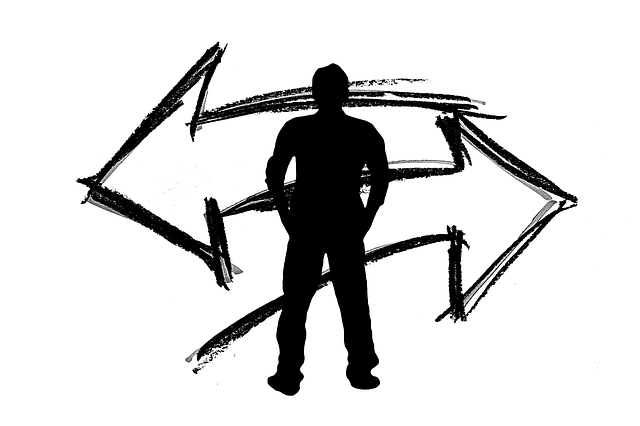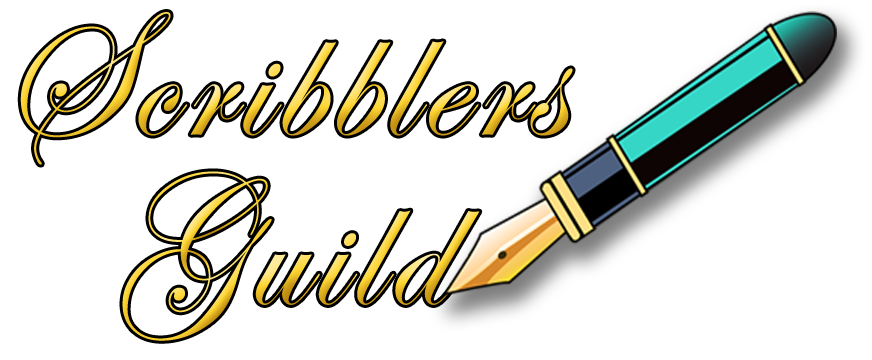Autobiography vs. Memoir
What’s the Difference?
Autobiography? Biography? Memoir? Story? Creative Non-Fiction? Personal Essay?

All too often, when a writer decides to “write their memoirs”, they are thinking about an autobiography — the story of their entire lifetime. Calling it a memoir is a misnomer.
Autobiographies and Memoirs are not the same. So, what is the difference?
Autobiography
“Auto”, from the Latin, means “self”. “Bio” means “life”. So an autobiography is your own life story written by yourself.
A Biography, on the other hand, is a life story written by someone else, like a ghostwriter. “Bi” meaning two or dual.

An Autobiography is an author’s complete life story, written by the author, starting from birth through childhood, young adulthood, and up to the present time at which the book is being written. As an author, you might choose this type of personal history if your life story could be considered interesting or remarkably different from others’ lives — people such as political leaders, Hollywood stars, and celebrities. Autobiography is what family members often request.
Autobiographical works tend to stay very close to the truth of what actually happened, but they are, by their very nature, subjective, based on the significance that the author has attached to their experiences and events.
Significance
Because the events of your life happened to you, you attached significance to them and remember them through the filter of that significance. Memory tells a truth the author believes, not necessarily what actually happened, especially if the author isn’t in possession of all the facts.
Memories are influenced by mood, prior experiences, and the unconscious values and beliefs we hold. As our beliefs change and mature throughout our lives, so do our memories of events that happened long ago.
In addition, they can shift and change, depending on our circumstances. The significance of our memories can evolve and alter, becoming huge milestones, or even being suppressed entirely, according to the meanings we give to them.
The inability — sometimes the unwillingness — of authors to recall accurate memories has, in many cases, resulted in misleading or incorrect information. This is dangerous. It’s something we must be aware of and guard against, because autobiography offers the author the ability to recreate history, to tell your story your way, and damn the torpedoes. Your motives for writing your story change the story itself. History is written by the victors after all, and the written word can last for centuries. “Revenge,” as they say, “is a dish best served cold.”
Autobiographies are usually a good deal less organized than stories or memoirs, simply because our lives are less organized. Story structure may be bypassed in favour of a strict factual and chronological account as recalled by the author, resulting in historically accurate renditions of events, rather than compelling stories people want to read.
If your purpose is a faithful record of events as you recall them, choose autobiography.
Memoir
 A memoir is a dramatic re-telling of a series of events that actually happened. A memoir is about a universal truth or common human experience, illustrated by a story about something deeply personal, and it’s that deeply personal connection to the events that make it compelling for your reader.
A memoir is a dramatic re-telling of a series of events that actually happened. A memoir is about a universal truth or common human experience, illustrated by a story about something deeply personal, and it’s that deeply personal connection to the events that make it compelling for your reader.
Your memoir is a standalone tale taken from life — a snapshot of a specific set of events that tells a story or conveys a message, and it stands on its own. It’s taken from actual, not imaginary, occurrences, told by a narrator who is undeniably the writer and is often written from a first-person point of view.
But beyond these fundamental requirements, it has the all the same responsibilities to the reader as the novel or the short story — a theme or message, a sympathetic protagonist, a compelling story arc and a character transformation.
Memoir vs. Autobiography
Here’s where Memoir departs from Autobiography. Where autobiography records a whole life, a memoir is meant to record a specific experience, series of connected events or timeframe in such a way that it becomes less a factual recounting of personal history and more a story with an overall meaning that resonates with the reader and causes him to feel immersed in the story.
While an autobiography typically focuses on the life story of the writer and is more emotionally distanced, a memoir has a narrower, more intimate focus on the writer’s own memories, feelings and emotions. Politicians, celebrities, or military leaders use memoirs as an explanation or opinion of their public exploits and their focus is on specifics — their philosophy or theory on life, or the events surrounding an occupation, location or time period.

Think of a memoir as a 100-yard dash vs. a marathon — a snapshot vs. a full-length documentary. It focuses on one specific part that stands out as a learning experience, a transformation, or a story worth sharing.
Frequently uplifting or humorous, a memoir covers a specific period in your life during which a connected series of events happened, based on a single common theme. It stands on its own, independent of all the rest of the events of your life.
Memoirs are true stories about a subject that means something to the author, often a life lesson learned. They’re built around one main universal truth or common human experience. They focus on the author’s transformation as a result of that experience, describing events that had immense significance and meaning and which changed the author in some way.
It’s this common human experience that connects to the reader on a deeply personal and authentic level, and is best told using storytelling structure in order to provide maximum emotional impact for the reader.
If your purpose is to share a life lesson, offer an opinion on certain aspects of the human condition, or teach your reader about a particular event or situation, memoir is the better choice. A memoir is a story, but a story is not a memoir. Memoirs are true-life experiences, based on carefully crafted story structure.
However, if you do want to write your entire life’s story, there’s good news…
As we mature, our outlook changes, so, with the gift of hindsight, it is possible to create an entire autobiography as a series of memoirs, each with a separate theme, message or time-frame, thus offering readers well-crafted stories which make up the tale of a life.
Story
So, just what is a story, anyway?

A story has a beginning, a middle and an ending. It’s built on an underlying structure, a premise, an inherent story question or “what if?” that piques a reader’s curiosity and keeps him reading to find out the answer. The stories we choose for our memoirs are ones that have had some emotional significance for us and therefore will have some underlying meaning and connection with our reader, as well as to the overall story question or theme.
A story isn’t a story without some kind of conflict or question that needs to be answered. We attach meaning to the conflicts and the highlight events in our lives. The significance of these events is determined by how emotional they are at the time and how much impact they have on us as we mature.
Stories are about something, something the protagonist has to change.
Theme and Conflict
A story has one, single main thought, theme, controlling idea or underlying concept that ties its events together in a way that provides a satisfactory conclusion for your reader. This is the basis of the story question.
And conflict? Conflict is what happens when a character encounters some kind of opposition — a mental block, inability or misunderstanding, a repressive parent or regime, a secret, or yes, even a fight or battle. Conflict is based on two opposing goals. It doesn’t always have to mean fights and car chases. It could be as simple as your character wanting a glass of water, but she doesn’t want to get out of a nice warm bed to get it.
 A story doesn’t even start until we encounter an obstacle: a “but”, an “except”, an “until”, a “however” — some kind of roadblock that prevents us from reaching our goal. Something happens to interrupt the status quo. It causes something to change. The change could be in us, our surroundings or our circumstances. A story always includes some kind of change or transformation.
A story doesn’t even start until we encounter an obstacle: a “but”, an “except”, an “until”, a “however” — some kind of roadblock that prevents us from reaching our goal. Something happens to interrupt the status quo. It causes something to change. The change could be in us, our surroundings or our circumstances. A story always includes some kind of change or transformation.
A story can be true or fictional or a combination of the two.
Fiction is what we most often think about when we hear the word “story” — the mysteries, fantasies, historical romances, gritty detective novels, space westerns and all those guilty pleasures we love to read late at night when the rest of the world sleeps. But fictional stories are based on imaginary events and don’t concern us as memoir writers, except insofar as they also require all the elements of good storytelling.
For the purposes of creating our personal histories, there are two main types of story:
Creative Non-fiction
Creative nonfiction is a factually accurate narrative written to entertain, and with attention to literary style and technique. This type allows for a certain amount of exaggeration and embellishment for effect. The goal is to communicate information so that it reads like fiction. This genre includes biography, autobiography, memoir, diary, travel and food writing, literary journalism and personal essays.
Creative nonfiction allows the memoir writer a fair degree of leeway, since it doesn’t pretend to be purely factual. These are the “based on a true story” movies we enjoy, or books like “Eat, Pray, Love” which are fact-based, but the author has manipulated timelines, exaggerated incidents, or combined characters, so that the story makes sense as a standalone tale.
Personal Essay

Essays are those things in school we dreaded having to write so that we could get a passing grade, a piece of writing that gives the author’s own argument or opinion. There are two main types – formal and informal. Formal essays are characterized by serious purpose, dignity, logical organization and length, whereas the informal essay is characterized by the personal element — self-revelation, individual tastes and experiences, confidential manner, humour, graceful style, rambling structure, unconventionality or novelty.
Most likely, you’ll want to start with an informal personal essay in order to get your feet wet and begin writing, since this form offers more flexibility and personal expression.
Conclusion
A full-length autobiography often consists of a series of memoirs, with each memoir based on a single thematic idea compiled from a related collection of personal essays.

Writing your memoirs as a series takes off a lot of pressure, because it’s a lot easier to decide which incidents and experiences fit into each essay and which ones don’t. You can then decide which essays fit within a given memoir’s overall story question and theme. And also, which ones can safely be omitted.
It also lets you be more specific and detailed about the incidents you do include. The result is a series of better stories with better story structure, which is more interesting to the reader.
And, as you build up your collection of themed memoirs, over time you’ll create an entire autobiographical legacy.
Happy Writing!

Beverley Hanna
Trained as an artist in the late 1960’s and early 1970’s, I was one of the first creatives to be employed in the computer graphics industry in Toronto during the early 1980’s. For several years, I exhibited my animal portraiture in Canada and the U.S. but when my parents needed care, I began writing as a way to stay close to them. I’ve been writing ever since. I run a highly successful local writer’s circle, teaching the craft and techniques of good writing. Many of my students have gone on to publish works of their own. I create courses aimed at seniors who wish to write memoirs, with a focus on the psychology of creatives and the alleviation of procrastination and writer's block.
